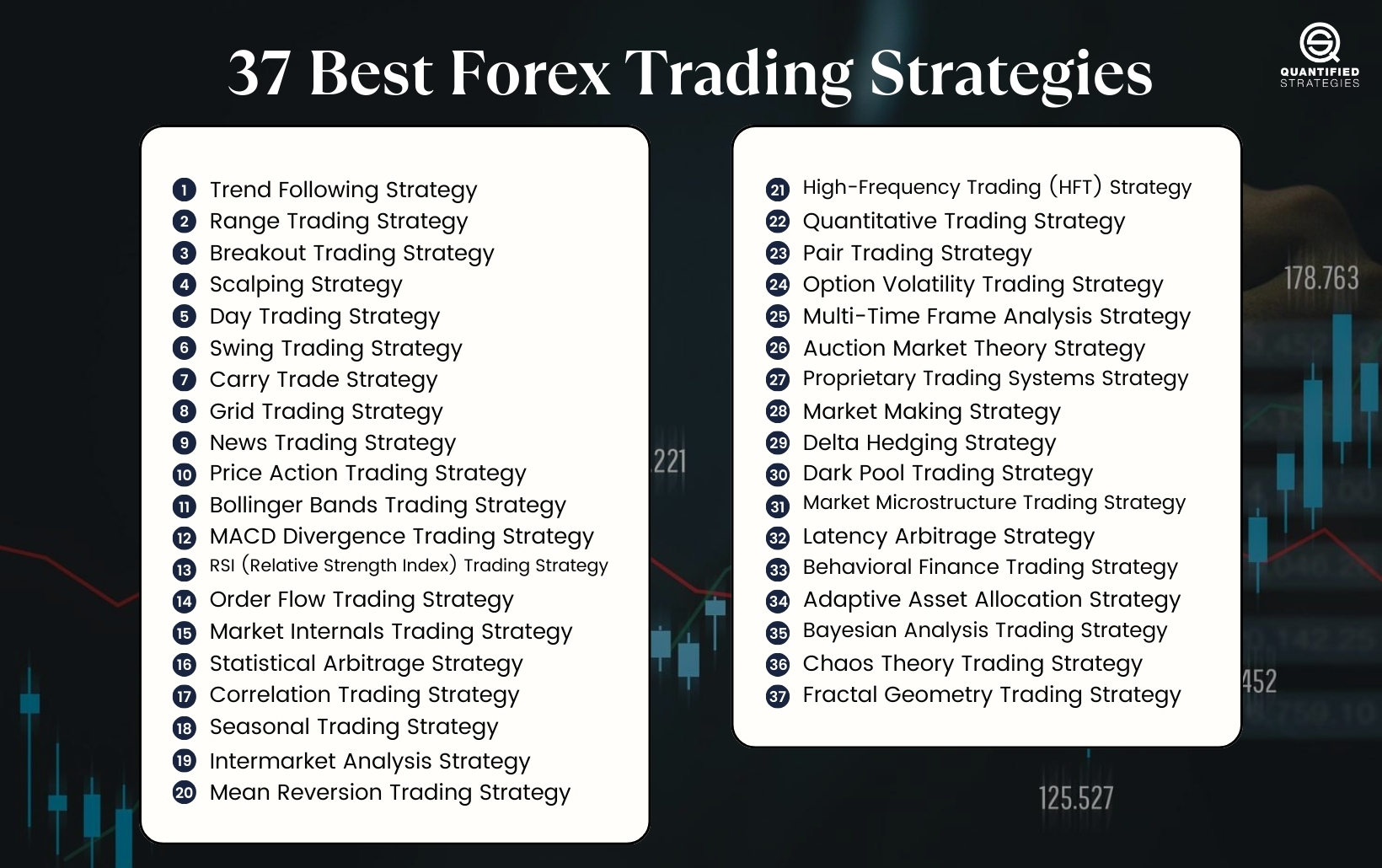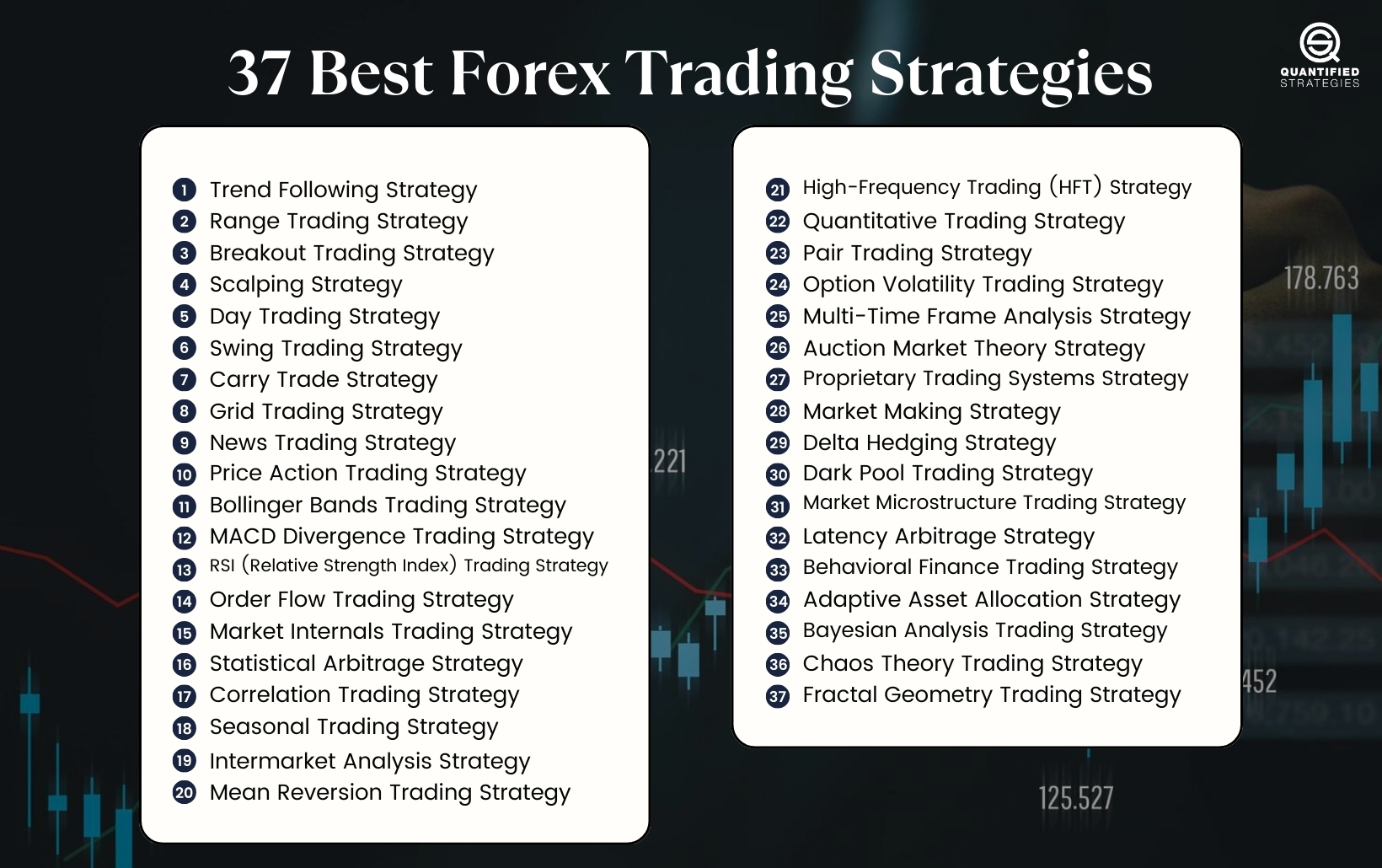Did you know that high-frequency trading (HFT) can execute thousands of trades in just a fraction of a second—faster than most of us can blink? In this article, we’ll unravel the complexities of developing your own HFT strategy, covering essential topics like key components, algorithm selection, and necessary tools. We'll guide you through the intricacies of backtesting, risk management, and optimizing performance, while also addressing regulatory considerations and common pitfalls. With insights from DayTradingBusiness, you’ll be well-equipped to navigate the fast-paced world of HFT and enhance your trading proficiency.
What is High-Frequency Trading (HFT) and Why Develop a Strategy?
High-Frequency Trading (HFT) is a form of algorithmic trading that uses powerful computers to execute a large number of orders at extremely high speeds. Developing a strategy is essential because it helps identify profitable trading opportunities, manage risks, and optimize execution. A well-defined HFT strategy allows traders to capitalize on market inefficiencies, improve liquidity, and gain a competitive edge in fast-moving markets.
How Do I Start Developing an HFT Strategy?
To start developing a high-frequency trading (HFT) strategy, follow these steps:
1. Define Objectives: Determine your goals, such as desired returns and risk tolerance.
2. Market Research: Analyze the market conditions and identify profitable opportunities suitable for HFT.
3. Data Acquisition: Gather high-quality, real-time data, including price feeds and order book information.
4. Algorithm Development: Create algorithms that can execute trades based on your strategy. Focus on speed and efficiency.
5. Backtesting: Test your algorithms using historical data to evaluate performance and refine your strategy.
6. Risk Management: Implement risk management techniques to minimize losses, like stop-loss orders and position sizing.
7. Execution Infrastructure: Set up a robust trading infrastructure with low latency connections to exchanges.
8. Monitor and Optimize: Continuously track performance and adjust your strategy based on market changes and outcomes.
Start small, scale gradually, and always stay informed about market trends.
What Key Components Should My HFT Strategy Include?
Your HFT strategy should include the following key components:
1. Market Analysis: Use quantitative models to identify trading opportunities based on price movements and volume.
2. Algorithm Development: Create algorithms that can execute trades quickly and efficiently, optimizing for speed and accuracy.
3. Risk Management: Implement strict risk controls to limit losses, including stop-loss orders and position sizing.
4. Infrastructure: Invest in high-performance hardware and low-latency connectivity to ensure rapid order execution.
5. Backtesting: Rigorously test your strategy against historical data to validate its effectiveness before live trading.
6. Regulatory Compliance: Stay updated on regulations affecting HFT to ensure your strategy adheres to legal standards.
7. Continuous Monitoring: Regularly analyze performance metrics and market conditions to adapt your strategy as needed.
These components are essential for developing a successful high-frequency trading strategy.
How Do I Choose the Right Trading Algorithms for HFT?
To choose the right trading algorithms for high-frequency trading (HFT), focus on these key factors:
1. Market Analysis: Evaluate the market conditions and identify patterns. Look for algorithms that excel in the specific market you’re targeting.
2. Data Quality: Ensure you have access to high-quality, low-latency data. Algorithms depend heavily on accurate and timely information.
3. Execution Speed: Prioritize algorithms that optimize execution speed. Latency can significantly impact profits in HFT.
4. Backtesting: Use historical data to backtest algorithms. This helps you assess their performance under various market scenarios.
5. Risk Management: Integrate robust risk management features. Algorithms should include stop-loss mechanisms and position sizing strategies.
6. Customization: Select algorithms that allow for customization based on your trading style and risk tolerance.
7. Scalability: Ensure the algorithm can scale with your trading volume without a drop in performance.
8. Regulatory Compliance: Confirm that the algorithm adheres to trading regulations in your market.
By focusing on these factors, you can effectively select and develop trading algorithms that align with your HFT strategy.
What Data and Tools Are Essential for HFT Strategy Development?
For high-frequency trading (HFT) strategy development, you need robust data and tools.
1. Market Data: Access to high-quality, low-latency market data, including order book data, tick data, and historical price data.
2. Data Analysis Tools: Use languages like Python or R for statistical analysis and algorithm development. Libraries like Pandas and NumPy are essential for data manipulation.
3. Backtesting Frameworks: Implement backtesting tools like Backtrader or Zipline to test your strategies against historical data.
4. Execution Systems: Employ direct market access (DMA) platforms to ensure low latency and efficient order execution.
5. Risk Management Tools: Utilize risk assessment software to monitor and manage exposure effectively.
6. Machine Learning Frameworks: Consider libraries like TensorFlow or PyTorch for developing predictive models.
7. Infrastructure: Invest in high-performance computing resources and co-location services to minimize latency.
These components are critical for developing and refining an effective HFT strategy.
How Can I Backtest My HFT Strategy Effectively?
To backtest your high-frequency trading (HFT) strategy effectively, follow these steps:
1. Data Collection: Gather high-quality historical market data, including tick data for accurate price movements and volume.
2. Choose a Backtesting Platform: Use software like QuantConnect or backtrader that supports HFT strategies and can handle large datasets.
3. Define Your Strategy: Clearly your entry and exit criteria, risk management rules, and any algorithmic elements.
4. Simulation: Run your strategy on historical data, ensuring to simulate real-life conditions like latency, order execution, and slippage.
5. Analyze Results: Evaluate metrics like Sharpe ratio, maximum drawdown, and win/loss ratio to gauge performance.
6. Optimize Parameters: Adjust your strategy parameters to improve performance, but avoid overfitting to historical data.
7. Walk-Forward Testing: Implement walk-forward analysis to validate the robustness of your strategy over different market conditions.
8. Paper Trading: Test your strategy in a live environment without real capital to refine execution and performance.
By following these steps, you can effectively backtest your HFT strategy and enhance its potential for success.
What Are Common Risks in High-Frequency Trading?

Common risks in high-frequency trading (HFT) include:
1. Market Risk: Rapid price changes can lead to significant losses before trades can be adjusted.
2. Liquidity Risk: Insufficient liquidity can cause problems in executing trades at desired prices.
3. Technology Risk: System failures or glitches can disrupt trading, leading to unexpected losses.
4. Regulatory Risk: Changes in regulations can impact trading strategies and profitability.
5. Execution Risk: Delays or errors in trade execution can result in missed opportunities or unfavorable prices.
6. Counterparty Risk: The possibility that the other party in a trade may default can lead to financial losses.
Addressing these risks is crucial in developing a robust HFT strategy.
How Do Market Conditions Affect My HFT Strategy?
Market conditions significantly impact your high-frequency trading (HFT) strategy. Volatility can create more trading opportunities but also increases risk. In bullish markets, trends may be stronger, benefiting momentum strategies. Conversely, bearish or sideways markets can lead to choppy price action, making it harder to execute profitable trades.
Liquidity is crucial; in tight markets, spreads may widen, affecting trade execution and slippage. High volatility can lead to rapid price changes, requiring your strategy to adapt quickly to avoid losses.
To develop a robust HFT strategy, continuously analyze market conditions and adjust your algorithms accordingly. Use backtesting to evaluate performance across different scenarios and refine your approach based on real-time data.
How Can I Optimize My HFT Strategy for Better Performance?
To optimize your high-frequency trading (HFT) strategy for better performance, focus on the following key areas:
1. Data Analysis: Use high-quality, low-latency market data to identify patterns. Regularly backtest your strategy against historical data.
2. Algorithm Tuning: Continuously refine your algorithms. Adjust parameters based on performance metrics and market conditions.
3. Execution Speed: Minimize latency by optimizing your infrastructure. Utilize co-location services and efficient coding practices.
4. Risk Management: Implement strict risk controls. Use stop-loss orders and monitor exposure to avoid significant losses.
5. Market Microstructure: Understand the mechanics of the markets you trade. Adapt strategies to exploit inefficiencies in order book dynamics.
6. Diversification: Trade across multiple assets or strategies to reduce risk and enhance opportunities.
7. Regular Reviews: Conduct frequent strategy reviews and updates. Stay informed on market changes and adjust accordingly.
By concentrating on these areas, you can enhance the performance of your HFT strategy.
What Role Does Technology Play in HFT Strategy Development?

Technology is crucial in high-frequency trading (HFT) strategy development. It enables rapid data analysis, allowing traders to identify patterns and opportunities in milliseconds. Advanced algorithms process vast datasets to inform trading decisions, while high-speed connections ensure trades are executed at lightning speed. Machine learning can optimize strategies by adapting to market changes in real-time. Additionally, robust infrastructure ensures minimal latency, which is vital for maintaining a competitive edge. In essence, leveraging technology effectively is key to developing successful HFT strategies.
How Do I Measure the Success of My HFT Strategy?
To measure the success of your high-frequency trading (HFT) strategy, track key performance indicators (KPIs) such as:
1. Return on Investment (ROI): Calculate the profit relative to your investment.
2. Sharpe Ratio: Assess risk-adjusted returns by comparing excess return to its standard deviation.
3. Win Rate: Determine the percentage of profitable trades versus total trades.
4. Average Trade Duration: Analyze how long trades are held to identify optimal timing.
5. Slippage: Measure the difference between expected and actual trade prices.
6. Drawdown: Monitor peak-to-trough decline to evaluate risk exposure.
Regularly review these metrics to refine your strategy and ensure it aligns with your trading goals.
What Are the Regulatory Considerations for HFT Strategies?
Regulatory considerations for high-frequency trading (HFT) strategies include compliance with market regulations, such as the SEC and FINRA rules in the U.S. You must ensure transparency in your trading algorithms and avoid manipulative practices like quote stuffing or layering. It's essential to maintain robust record-keeping and surveillance to track trades and strategies. Additionally, be aware of the rules regarding market access and the use of proprietary data. Regular audits and risk management practices are crucial to stay compliant and avoid penalties.
How Can I Stay Updated on HFT Trends and Techniques?
To stay updated on high-frequency trading (HFT) trends and techniques, follow these steps:
1. Read Industry Publications: Subscribe to financial news outlets like Bloomberg, Financial Times, and specialized HFT blogs.
2. Join Online Forums: Engage in communities like QuantNet or Elite Trader for discussions on HFT strategies.
3. Follow Influential Figures: Track thought leaders on social media platforms, particularly LinkedIn and Twitter, who share insights on HFT.
4. Attend Conferences and Webinars: Participate in finance and technology conferences focused on trading where experts present the latest research and techniques.
5. Take Online Courses: Enroll in courses on platforms like Coursera or edX that cover quantitative finance and algorithmic trading.
6. Analyze Research Papers: Regularly read academic papers and case studies on HFT to understand innovative strategies.
7. Backtesting and Simulation: Continuously test your own strategies using tools like QuantConnect or Backtrader to stay practical and informed.
By combining these resources, you can effectively keep up with evolving HFT practices.
Learn about How to Stay Updated on AI Trends in Day Trading?
What Common Mistakes Should I Avoid in HFT Strategy Development?

Avoid these common mistakes in high-frequency trading (HFT) strategy development:
1. Neglecting Proper Data Analysis: Failing to analyze historical data thoroughly can lead to flawed assumptions and poor strategy performance.
2. Overfitting Models: Creating overly complex models that perform well on past data but fail in real market conditions is a major pitfall.
3. Ignoring Transaction Costs: Not accounting for slippage, commissions, and other costs can erode profits significantly.
4. Lack of Risk Management: Failing to implement robust risk management techniques can expose your capital to unnecessary losses.
5. Inadequate Backtesting: Skipping comprehensive backtesting or using insufficient data can result in misleading results.
6. Relying Solely on Technology: Assuming that advanced technology alone will succeed without a solid trading strategy is misguided.
7. Underestimating Market Impact: Not considering how your trades will affect market prices can lead to unexpected outcomes.
8. Disregarding Regulatory Compliance: Ignoring the legal landscape can result in costly penalties and operational shutdowns.
9. Poor Execution Timing: Delaying execution can diminish the effectiveness of your strategy, especially in fast markets.
10. Failing to Adapt: Markets evolve; sticking to outdated strategies without adapting can lead to failure.
Focus on these areas to enhance your HFT strategy's chances of success.
How Do I Scale My HFT Strategy for Larger Markets?
To scale your high-frequency trading (HFT) strategy for larger markets, focus on the following steps:
1. Enhance Infrastructure: Upgrade your technology stack for faster data processing and execution. Consider co-location services to reduce latency.
2. Optimize Algorithms: Refine your trading algorithms for efficiency. Test them with larger datasets and in different market conditions to ensure robustness.
3. Diversify Strategies: Implement multiple trading strategies across various asset classes to spread risk and capture more opportunities.
4. Increase Capital Allocation: Gradually allocate more capital to your strategy, ensuring you have sufficient liquidity and can handle larger trades without significant slippage.
5. Monitor Market Impact: Assess how your trades affect the market. Adjust your order sizes and execution methods to minimize market impact.
6. Improve Risk Management: Develop a comprehensive risk management framework. Set limits on drawdowns and employ stop-loss mechanisms to protect your capital.
7. Leverage Advanced Analytics: Use machine learning and statistical methods to analyze market data and refine your models for better predictive accuracy.
8. Backtest Rigorously: Continuously backtest your strategy against historical data as you scale. This helps identify weaknesses and areas for improvement.
9. Stay Compliant: Ensure you adhere to regulatory requirements in larger markets to avoid penalties.
10. Network and Collaborate: Connect with other traders and firms to share insights and potentially access better liquidity and execution options.
By following these steps, you can effectively scale your HFT strategy while maintaining performance and managing risk.
What Resources Are Available for Learning About HFT Strategies?
To learn about high-frequency trading (HFT) strategies, consider these resources:
1. Books: "Algorithmic Trading" by Ernie Chan and "High-Frequency Trading" by A. A. Avellaneda are essential reads.
2. Online Courses: Platforms like Coursera and Udemy offer courses specifically on algorithmic and high-frequency trading.
3. Research Papers: Websites like SSRN and arXiv host academic papers on HFT strategies.
4. Forums and Communities: Join communities like QuantConnect and Elite Trader for discussions and insights.
5. Webinars and Conferences: Attend industry conferences and webinars for the latest trends and techniques.
6. Financial News: Follow sites like Bloomberg and Reuters for updates on HFT developments.
Utilize these resources to deepen your understanding and develop your own HFT strategy effectively.
Conclusion about How to Develop Your Own HFT Strategy
Developing a high-frequency trading (HFT) strategy requires careful consideration of various components, from algorithm selection to market conditions. By leveraging the right data, tools, and technology, traders can optimize their strategies for enhanced performance while navigating the inherent risks. Continual learning and adaptation are crucial to staying ahead in this fast-paced environment. For comprehensive insights and support in refining your HFT approach, DayTradingBusiness is here to help you succeed.
Learn about How to Develop Your Own Breakout Strategy